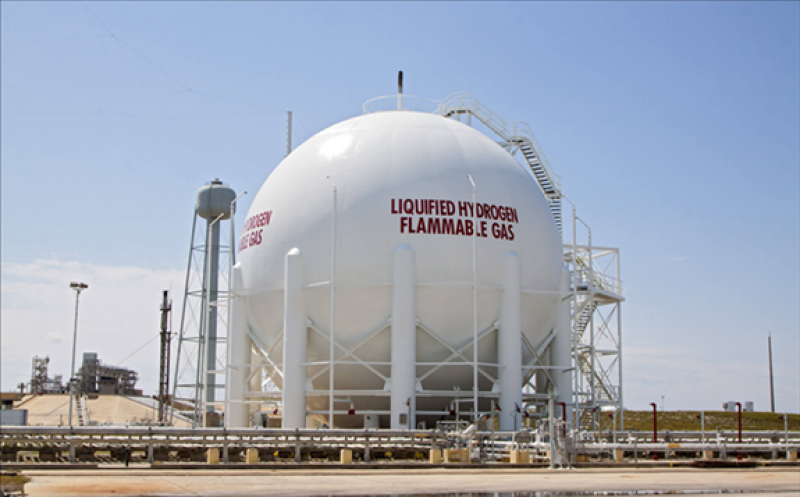NASA and the US Department of Energy (DOE) hosted a liquid hydrogen workshop on Wednesday (August 18) that featured information on NASA’s new liquid hydrogen sphere.

James Fesmire, Senior Principal Investigator at NASA’s Kennedy Space Center, talked about the new 4,700m3 liquid hydrogen sphere that is being used to provide additional storage capacity.
The new liquid hydrogen sphere, which as James Fesmire explains can hold 333 tonnes of liquid hydrogen, is set to be completed in 2022 and will support the Artemis moon mission.
This will be achieved by supplying liquid hydrogen to power the rockets propulsion system.
Fesmire started the workshop by discussing the history of NASA’s liquid hydrogen usage with the support it gave during the initial Saturn V rocket launches in addition to its later use in the Artemis space launch.
With more space launches, NASA sought to provide additional liquid storage capacity to build on its already extensive supply.
Fesmire said, “We have 8,000m3 cubic metres total site storage capacity of liquid hydrogen and the construction began in 2018 on that additional storage system.”
This additional storage system is the new liquid hydrogen sphere being built at Launch Complex 39B with Fesmire giving the scale at which this new sphere holds liquid hydrogen, “The sphere is 4,700m3. That’s about 333 tonnes of liquid hydrogen A good sized liquid hydrogen plant these days runs maybe 30 tonnes per day capacity.”
With storing large-scale liquid hydrogen, Fesmire said that there is three main benefits to doing this, “The first one is energy density. And the second one is that once that liquid is produced with liquids made, then there’s capability to exploit, such as self-pressurisation, the liquid can contain it, move it to a smaller vessel, contain it.
“It will autonomously self-pressurise to 1000 – 2000 bar and much higher, according to the vessel design. Thirdly, it’s ultra-high purity hydrogen for fuel cells so that they’re not messed up. Inherently high purity, the highest purity, hydrogen for the electric sails.”
Perhaps the most impressive statement was the conceptualisation of the scale of liquid hydrogen in the sphere. Fesmire explained, “A small 10m2 footprint would hold 30 tonnes of hydrogen. If you wanted to do that in gaseous form, 700 bar, It would take a footprint about the size of the underside of the Eiffel Tower or about 500m2.
“And the weight of the high-pressure gas bottles, would be about the weight of the Eiffel Tower. It’s a staggering contrast in what makes sense and what’s effective.”
This remarkable storage method allows hydrogen to be stored in high capacity, as shown in the contrast to the Eiffel Tower. This also reveals how much hydrogen is needed for space launches.
Building the sphere increases NASA’s capabilities for future launches such as the Artemis program.